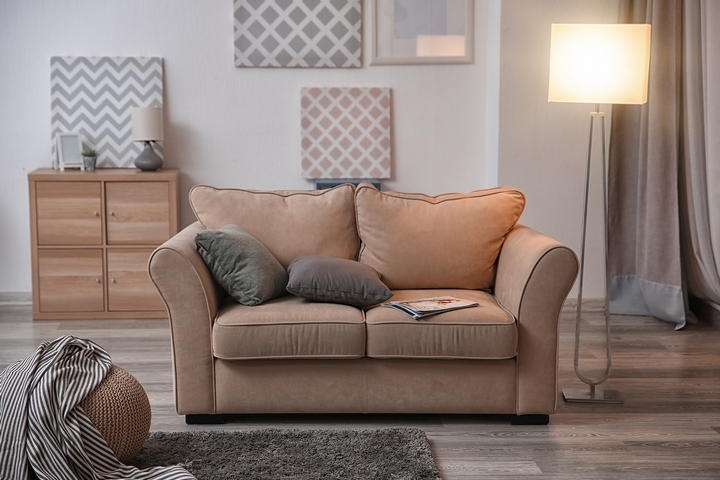When moving, it’s lucky if you can fit your most prized possessions in a box and have them wrapped nicely. For furniture, this obviously isn’t possible. For the sake of where you were living before, where you’re living now, and also your furniture, it is important to know how to protect furniture when moving.
Below are the sixteen tips on how to protect furniture when moving:
1. Dust Furniture


It may sound unnecessary but prep furniture for packing. Do this by dusting and wiping away debris. Dust and debris can scratch the surface of furniture during a move. This is especially true with dining tables, side tables, and similar items.
2. Clear Clutter


Before you start moving furniture, clear away any clutter. Ensure you can move furniture in and around safely without any risk of tripping over things. Prop doors open wide. Give yourself lots of space. Be careful not to hit any walls or to catch the corner of an entryway with your bulky furniture.
3. Have a Helping Hand


It’s happened a ton. Heavy furniture drops. It falls. It cracks. It breaks. It happens because someone’s tried moving heavy furniture on their own with a helper. Don’t chance it. You could injure yourself, damage the floor, or break your furniture. Have a helper if you know you’ve got heavy items to move.
4. Use Storage


Consider using storage containers to protect furniture when moving. These containers allow you to keep furniture and other items in a portable storage unit. That way, you won’t have to worry about them getting damaged during the move. Since storage containers are portable, you can retrieve the items at your new destination after you’ve completed moving.
5. Remove Knobs and Handles


Knobs, casters, and pulls catch. Remove them from furniture. Keep them separate. This makes dressers more comfortable to carry, among other items. Be sure not to lose any knobs, handles, pulls, or casters by keeping them together.
6. Empty Drawers


From dressers and desks, take out drawers and empty them. Keep the drawer out. Particularly when one’s trying to move heavy furniture – such as an office desk – this at least removes some of the weight.
7. Sealable Plastic Bags


For small accessories that go with your furniture, you don’t want to toss them into a box and risk loss. Sealable plastic bags can be tapped to your furniture or kept close and labelled to ensure nothing’s lost in transport.
8. Bubble Wrap Glass Items


Any glass décor or glass furniture, or delicate wood pieces for that matter, can be wrapped in bubble wrap. Even in driving, the bumps of the road can be enough to crack or shatter glass. Bubble wrap protects your glass as best as possible every step of the way.
9. Use Plastic Wrap


Plastic wrap and bubble wrap are both handy to have. Plastic wrap can protect large pieces, protecting upholstered items and the like. Alternatively, if you don’t like or don’t have any disposable plastic wrap, you can use old blankets or packing blankets. It’s the same approach.
10. Packing Blankets for Electronics


Packing blankets are key for any electronics. Home theater TVs and speaker systems. Large appliances. Any sort of electronics should be thoroughly protected when moving. Although plastic wrap works in some of these situations, packing blankets are reusable and can be packaged adequately around furniture that needs it.
11. Corrugated Cardboard


Corrugated cardboard can be used in a lot of cases to help protect furniture when moving. Corrugated cardboard can be placed in between wooden pieces or to add some cushion, minimizing the risk of gouges or scratches while the furniture is in transport.
12. Dismantle Furniture


There are different ways of thinking on whether to dismantle furniture when moving. Most argue it’s better than keeping the furniture together. If you do dismantle, refer to the owner’s manual. Try to not strip any screws. Also, take your furniture apart before moving day. This way, there’s minimal stress and no rushing.
13. Place Against Boxes


Any square furniture can be placed directly against boxes in the moving van. Next to boxes, furniture has some cushion. This doesn’t mean not to use blankets or corrugated cardboard. Placement against boxes and some security goes a long way in protecting furniture and everything around it.
14. Use Sofa and Mattress Covers


Catch a corner just right and fabric from a couch or mattress can tear. Accidentally drop a mattress on the lawn bringing it out or in and it could stain or at least require a thorough clean. Mattress covers and sofa covers protect these materials from coming into contact with things which could easily create irreversible damage.
15. Reduce Friction and Add Cushion


Another way to protect furniture is to use things like couch cushions, rugs, and similar household items to position between hard items like tables, chairs, electronics, dressers, bed frames, etc. You’re never going to overdo it on the cushions so if you’ve got them, use them as you’re filling up the moving truck.
16. Load In By Weight


Be careful loading up a truck. You want to place big, bulky, heavy furniture on the ground. Be careful to ensure they are secure. This may involve tying them down or together. Placing in materials like mirrors and flat-screens, ensure these are secure and do not have anything excessively heavy on top of them. In transportation, not packing smartly is a sure way to break or damage furniture and other items.
















